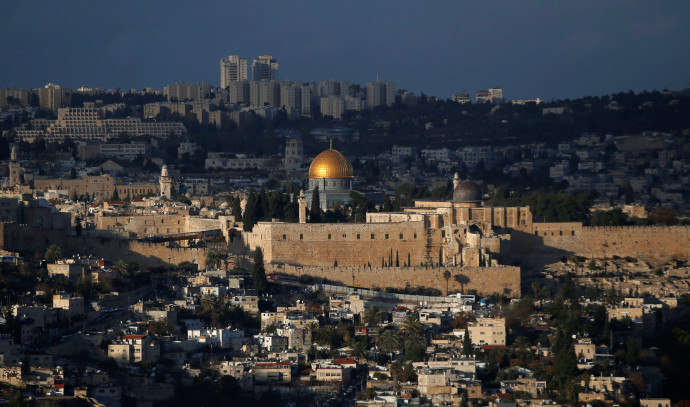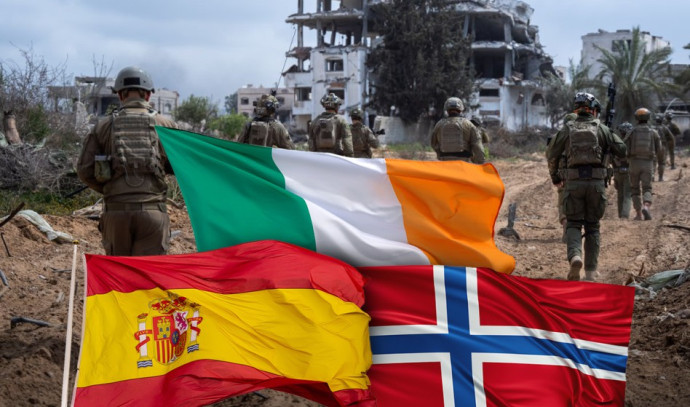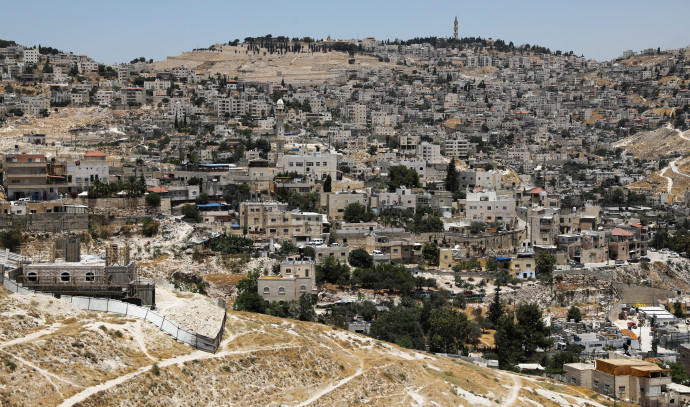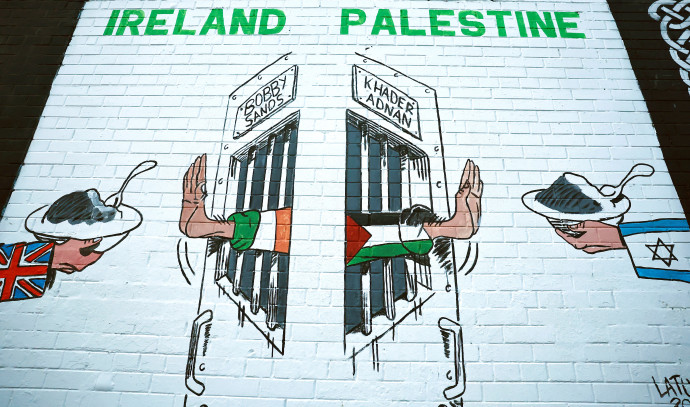world news
Knesset members to visit schools in east Jerusalem

This week, a special tour group of Knesset members is expected to visit various schools in east Jerusalem as part of the work of the ‘Subcommittee for Curricula in east Jerusalem and Their Supervision’ headed by MK Avichai Boaron of Likud. Due to security and political sensitivities, only subcommittee members will be allowed to participate in the visit under heavy security.
During the visit, Knesset members will be able to discuss and meet face-to-face with relevant factors in the education system, learn about existing challenges and opportunities, and examine ways to improve and enhance learning and teaching processes to meet the government’s targets for transitioning students from Palestinian to Israeli curricula.
MK Boaron emphasized that the visit is intended to allow Knesset members to get a firsthand impression of what’s happening in East Jerusalem schools and to formulate an up-to-date and accurate picture that will serve as a basis for promoting wise and effective policy in the field of education in the eastern part of the city.
Boaron added, “The subcommittee under my leadership is committed to working to improve the quality of education in East Jerusalem, while ensuring quality curricula adapted to the needs of the students. We believe that education is the key to integration and advancement of society in the eastern part of the city, and we will do everything in our power to ensure that every student gets the opportunity to realize their potential.”In a discussion held a few days ago in the Education Committee’s subcommittee, the data behind the government’s decision regarding education in East Jerusalem was revealed, budgeted at one billion NIS, and far from meeting its goals.
The committee’s findings
The committee also revealed that 6000 out of 6700 teachers were trained in the Palestinian Authority, and 85 percent of schools (over 90,000 out of 110,000 students) still study the Palestinian Authority’s curriculum.
The data also showed that close to 200 million NIS from the amount allocated for this matter in the government’s decision were invested in the program. Still, only 2000 students have transitioned in the last two years from the Palestinian program to the Israeli program. In fact, the State of Israel invests one million NIS to transition a student in East Jerusalem from the Palestinian program to the Israeli one.
In the discussion ahead of the special tour, Boaron said, “This committee was established to deal with a problem that is nothing less than a powder keg placed in the heart of Jerusalem, the capital city of the State of Israel. Before we go to ‘de-Nazify’ the students of the Gaza Strip, we must examine the learning content here in Jerusalem. After many years under the minister’s leadership, incitement content was removed from the learning materials. In parallel, about a year and a half ago, the minister led a government decision to replace the Palestinian curriculum with an Israeli curriculum. This decision is good and important. However, this decision did not bring about the desired change – east Jerusalem residents are not interested in adopting the Israeli curriculum, and the teachers themselves are not willing to teach the program.”
“My colleagues and I will do everything to change this delusional reality. This intolerable situation cannot continue.” He continued.
“The latest government decision on this issue speaks of slow and gradual treatment of the problem before us, but this is a big mistake. The treatment of this problem must be sharp and quick. In the coming months, if the situation does not change significantly for the better, I will turn to the Prime Minister and recommend canceling the government’s decision on the matter and making a completely different decision. We need to deal with the complex problems existing in the current education of east Jerusalem students in a much more stubborn and severe manner than what is happening today. The committee’s discussions help us understand the scope of the problem and its severity and decide on the best tools to deal with its correction.”
Following that discussion, MK Boaron sent a letter to the Prime Minister, the Minister of Education, and other officials to share the data and conclusions and even proposed an innovative idea to examine cooperation with Arab countries and connect them to the education system in east Jerusalem.
“Education in east Jerusalem is a national event, no less.” MK Boaron concluded, “And that’s how it should be treated, with seriousness and gravity. For decades we have allowed this bomb to grow quietly and without interference, with God’s help we intend to study the issue in depth, and lead significant processes in the matter together with all the factors, the existing situation must change.”
world news
Millionaire refugees: The charged debate over UNRWA’s defining policy and its future

Despite the growing criticism, Israel is standing firm in its attempt to banish the United Nations Relief and Works Agency from operating in its territory.
Since its ban came into effect on January 30, Israeli authorities have severed coordination ties with the agency, shut down schools in east Jerusalem, and effectively forced international staff to leave.
The government’s decision was largely driven by its expanding allegations that UNRWA employees hold links to terrorist organizations.
The fallout has been swift. Countries such as the United States, Canada, New Zealand, and the European Union have suspended or withdrawn funding, citing concerns over neutrality.Beyond the political maneuvering and aid cuts, the issue has added fresh scrutiny to a decades-old debate that remains unresolved: Who qualifies as a Palestinian refugee? And should this status be inherited indefinitely – even by millionaires?
A refugee definition unlike any other
UNRWA was created shortly after the 1948 Arab-Israeli war to assist 750,000 Palestinians displaced by the conflict. Today, its registry lists over six million refugees.
Critics argue that no other refugee group in the world operates with this mandate.
“Unlike every other refugee crisis in history, Palestinian refugees don’t decrease in number – they increase. UNRWA doesn’t resettle, it perpetuates,” says Dina Rovner, legal adviser for UN Watch. “The result? A crisis that has lasted decades longer than any other.”
Among those classified as Palestinian refugees is Jordanian-American real estate mogul Mohamed Hadid and his five millionaire children, including supermodels Bella and Gigi Hadid. Twenty-nine-year-old Zahwa Arafat, the billionaire daughter of former Palestinian leader Yasser Arafat, also retains this status.
Under UNRWA’s unique framework, all descendants of Palestinian refugees “who lost both their home and means of livelihood in Mandate Palestine between 1946-1948 are eligible for refugee status,” regardless of wealth or nationality – a stark contrast to the Office of the United Nations High Commissioner for Refugees (UNHCR), which removes individuals from its registries once they are resettled or naturalized.
UNRWA, though, asserts that Palestinian refugee status is determined by the UN General Assembly, not the agency itself.
“Palestinian refugees were recognized under Resolution 194 before UNRWA existed, where human rights were not subjected to economic status,” says Jonathan Fowler, UNRWA’s senior communications manager. “In mass displacements, refugee status applies collectively and passes through generations, as seen with Afghan, Sudanese, and Sahrawi refugees”
“Yet, the difference is striking. After WWII, millions were displaced, primarily in Europe, but around 1.5 million were resettled by temporary UN agencies before UNHCR took over in 1952. In contrast, 77 years later, UNRWA remains a permanent institution, even as many, like the 2.4 million in Jordan who hold citizenship, continue receiving its assistance.”
This raises a pivotal question: Does UNRWA’s approach maintain statelessness rather than resolving it?
The debate over disparities
The controversy extends beyond definitions. Critics hold that UNRWA’s budget and staff allocation raise questions about its efficiency compared to other refugee agencies.
When first established, UNRWA’s annual budget was 110 times greater than UNHCRs. Today, it employs 30,000 staff for nearly six million refugees – a 1:200 ratio. In contrast, UNHCR, which serves around 32 million refugees globally, operates with 20,000 staff, translating to one staff member per 1,600 refugees.
“There is a clear inconsistency in how the world treats the Palestinians compared to other refugees,” says Rovner. “If they were under the UNHCR, the majority would not be considered eligible.”
Fowler counters the criticism, explaining that UNRWA’s economic and service model is fundamentally different and of significant value. “It was designed as a sustained relief and works program until a viable solution is achieved, much like the 1930s US Tennessee Valley Authority.” Moreover, he adds, “the value for money is extraordinary – hiring locals not only brings local benefits but also costs 40%-50% less than employing internationals.”
UNRWA under fire
As the debate over refugee classification rages on, Israel’s reports of UNRWA’s connections to terrorism have also dominated recent discussions. Citing its intelligence findings, Israeli authorities maintain that 10% of the agency’s senior educators in Gaza have ties to Hamas or Palestinian Islamic Jihad.
“UNRWA’s response is always the same – to deflect, deny, and cover up. They never take responsibility. They claim to be a ‘humanitarian backbone’ in Gaza but promote Hamas propaganda, like it did with the Gaza famine narrative, which has been totally debunked,” charges Rovner.
However, there are also claims that UNRWA is being targeted politically, as Fowler indicates: “There’s a barrage of misinformation about who we are and who we’re not. We share all our staff lists with regional authorities, including Israel, and have never received pushback about specific employees before.”
Despite Israel’s push to dismantle UNRWA, many European nations have since reinstated funding after reviewing oversight measures and accounting for its critical humanitarian role. Fowler points to the recently commissioned and independent Colonna Report, which found UNRWA to have more robust neutrality standards than any other UN agency. Still, critics like Rovner, remain unconvinced, contending that the problem is systemic.
What happens if UNRWA does disappear?
With increasing calls within Israel and the United States to abolish UNRWA, the question arises: If UNRWA disappears, what happens next?
Fowler says that the organization has no intention of existing indefinitely, but it continues so far as the situation remains unresolved.
“Abolishing UNRWA ignores reality,” observes Fowler. “We are often thanked by Israeli authorities, albeit at the moment not so openly, for the work we do, because without us, the responsibility will fall on them.”
The topic of reform has come up quite a lot where UNRWA and the UN at large are concerned. Some believe that redefining Palestinian refugees under UNHCR rules could force a shift in the political deadlock. Others, though, insist not only is it too little, too late for reforms, but that they are insufficient in addressing the deeper issues.
“As long as UNRWA exists, there will always be a Palestinian right-of-return narrative that keeps the conflict alive. Palestinians have to step up to the plate and take responsibility for their own future. Without Palestinian self-determination, chances of a prosperous future are slim,” says Rovner.
Questions without answers
With funding cuts, Israeli bans, and growing global pressure, UNRWA finds itself at a crossroads. Today, it is continuing to operate, even on a limited scale – holding that as long as millions remain classified as refugees, it has a job to do.
Still, fundamental questions continue to go unanswered: Who should be classified a Palestinian refugee? Should refugee status be hereditary forever – even for those who live in luxury? Who should be responsible for the Palestinians? And what is Israel’s role?
With neither Israel disappearing nor the Palestinian refugee issue nearing resolution, UNRWA persists as a central fault line in one of the world’s most protracted conflicts. Whether the agency serves as a crucial humanitarian lifeline or a political roadblock to lasting peace depends entirely on whom you ask.
world news
IDF told to prepare for ‘immediate’ return to Gaza fighting – report

Israel’s political echelon, led by Prime Minister Benjamin Netanyahu, has ordered the IDF to prepare for an “immediate” return to fighting in Gaza, KAN News reported on Friday evening.
The Jerusalem Post reported earlier this week that Israeli officials estimated that if no agreement was reached between Israel and Hamas, Israel would return to fighting in Gaza in about a week and a half.
“Hamas is currently rejecting [US Middle East envoy Steve] Witkoff’s proposal, so it is very difficult to make progress,” one official said.
According to the Prime Minister’s Office, Witkoff’s plan involves the release of half of the living hostages and the return of half of the bodies on the first day of the continued deal. The rest of the hostages and bodies would be returned on the 42nd day, which would be the final day of the ceasefire.However, some claim that the terrorist organization has not rejected the proposal. According to a source familiar with the negotiations, “Hamas has neither accepted nor rejected the Witkoff proposal.”
Eyal Zamir to Gaza border community heads: We’re preparing to fight
On his first day as the new IDF chief of staff on Thursday, Lt.-Gen. Eyal Zamir told heads of local councils from the Gaza border communities that “we are preparing to return to fighting” in Gaza.
“We must defeat Hamas,” Zamir said. “We are also preparing to resume fighting. The hostages are our top priority.”
Amichai Stein contributed to this report.
world news
Hamas ‘neither accepted nor rejected’ Witkoff’s plan as Gaza hostage talks stall

Negotiations over the continued release of hostages held in Gaza have stalled, and “right now there is nothing happening,” sources familiar with details of the talks admitted in conversation with The Jerusalem Post on Monday.
“Right now, there’s nothing happening,” an Israeli official told the Post, adding that “Hamas is currently rejecting the Witkoff proposal, so it is very difficult to make progress.”
According to Prime Minister Benjamin Netanyahu’s office, the Witkoff plan involves the release of half of the living hostages and the return of half of the bodies on the first day of the deal. The second half of the hostages and bodies would be returned on the 42nd day, which would be the final day of the ceasefire.
On the other hand, some claim that Hamas has not rejected the proposal. “Hamas has neither accepted nor rejected the Witkoff proposal,” said a source with knowledge of the negotiations with the Post.“Hamas has said it is willing to negotiate and has not rejected the plan. Since Israel currently states that this is the proposal on the table, from Israel’s perspective, Hamas has rejected it.”
Trump envoy Steve Witkoff not expected to visit Israel soon, source says
An Israeli source told the Post that there is no expectation for Trump’s envoy, Steve Witkoff, to visit the region at the moment, adding, “He will only come to finalize a deal. And since there is no real progress right now, it is unclear when or if he will arrive.”
Without an agreement on the release of additional hostages in the coming days, Israeli sources say Israel is preparing to escalate its actions against Hamas. After the decision on Sunday to stop humanitarian aid, Israel is preparing to cut off water and electricity to the Gaza Strip, as well as resume fighting – some say this might happen, without a deal, as early as next week.
Israeli officials suggest that even without accepting the Witkoff initiative, Hamas might agree to release additional hostages in the near future in exchange for the release of terrorists from prison and the entry of caravans and humanitarian aid, but they add that this also depends on other issues.
“The Israeli government needs to decide what will be negotiated with Hamas and what they will receive in exchange for the release of hostages in the coming weeks,” said an Israeli source. “Hamas’s agreement to release more hostages depends on the answers to these questions.”
Israeli Defense Minister Israel Katz said on Monday that Israel responded to the mediators’ request to allow a few more days of negotiations. Katz added,d “If Hamas does not release the hostages soon, the gates of Gaza will be locked and the gates of hell will be opened – we will return to fighting, and they will face the IDF with forces and methods they have never encountered before.”
Israeli officials suggest that even without accepting the Witkoff initiative, Hamas might agree to release additional hostages in the near future in exchange for the release of terrorists from prison and the entry of caravans and humanitarian aid, but they add that this also depends on other issues. “The Israeli government needs to decide what will be negotiated with Hamas and what they will receive in exchange for the release of hostages in the coming weeks,” said an Israeli source. “Hamas’s agreement to release more hostages depends on the answers to these questions.”
-

 Solar Energy3 years ago
Solar Energy3 years agoDLR testing the use of molten salt in a solar power plant in Portugal
-

 TOP SCEINCE7 months ago
TOP SCEINCE7 months agoSearching old stem cells that stay young forever
-

 Camera1 year ago
Camera1 year agoDJI Air 3 vs. Mini 4 Pro: which compact drone is best?
-
Indian Defense4 years ago
Israeli Radar Company Signs MoU To Cooperate With India’s Alpha Design Technologies
-

 Camera1 year ago
Camera1 year agoSony a9 III: what you need to know
-
world news1 year ago
Gulf, France aid Gaza, Russia evacuates citizens
-
world news5 months ago
Sirens trigger across central Israel following rocket barrage targeting Tel Aviv Iron Dome battery
-
world news5 months ago
Hezbollah’s gold mine catches fire: Nasrallah’s bunker under hospital held half billion dollars










